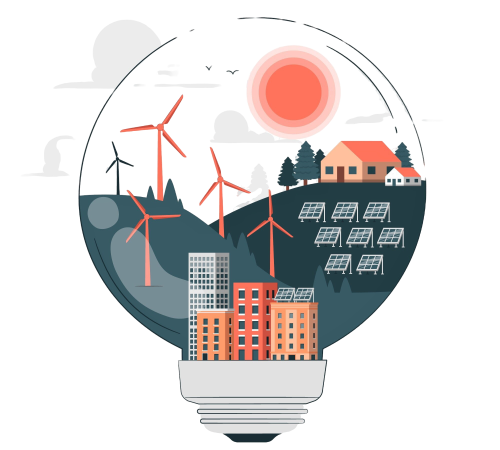Green Tech Innovations: Transforming Sustainability and Future Industries

Green tech innovations are revolutionizing how we address climate change and sustainability challenges. By combining cutting-edge technology with environmentally conscious practices, green tech is driving a global shift toward renewable energy, waste reduction, and eco-friendly industries. From solar power breakthroughs to energy-efficient buildings and electric vehicles, these innovations are not just transforming industries—they’re shaping a more sustainable future.
What is Green Tech?
Green tech, short for green technology, involves the development and application of innovative solutions to mitigate environmental harm and promote sustainability. This field spans a diverse array of technologies and practices focused on conserving resources, reducing waste, and minimizing carbon emissions.
At its heart, green tech prioritizes harnessing renewable energy sources like solar, wind, and hydroelectric power. It also includes creating eco-friendly products and systems that promote a circular economy. Technologies such as smart grids, electric vehicles, sustainable agriculture, and green building materials are key components of this transition to a low-carbon future.
By integrating green technology into industries and everyday life, we can address pressing environmental challenges while simultaneously fostering economic growth. In the sections below, we’ll explore some of the most groundbreaking green tech innovations transforming our world.
Top Green Tech Innovations
1. Green Hydrogen Production
Hydrogen has long been considered a clean fuel, but producing it without fossil fuels has been a significant challenge. This is where green hydrogen takes over, produced by using renewable energy sources such as solar or wind to split water into hydrogen and oxygen. This process emits zero carbon emissions. In 2024, industries such as heavy manufacturing and transportation are increasingly relying on green hydrogen to replace traditional fossil fuels, significantly lowering their environmental impact.
2. Smart Agriculture Technologies
To reduce its environmental footprint, the agricultural sector is turning to smart technologies. Innovations like vertical farming, precision irrigation systems, and AI-powered soil analysis are helping farmers conserve water and minimize fertilizer usage. Moreover, renewable energy-powered robotic tools are emerging as a sustainable solution that maximizes crop yields while reducing resource consumption.
3. Revolutionary Solar Technologies
Solar energy continues to dominate renewable energy advancements. In particular, perovskite solar cells stand out for their efficiency and cost-effectiveness compared to traditional silicon panels. Alongside this, bifacial solar panels, which capture sunlight on both sides, are becoming widely deployed to maximize energy production, especially in urban environments.
4. Battery Storage Breakthroughs
Efficient energy storage remains a critical component of renewable energy integration. Breakthroughs like solid-state batteries are addressing this need by offering greater energy density, faster charging capabilities, and improved safety compared to conventional lithium-ion batteries. These developments are accelerating the adoption of electric vehicles and enhancing the reliability of renewable energy grids.
5. Sustainable Building Materials
The construction industry is increasingly adopting sustainable materials to reduce its environmental impact. For example, innovations such as carbon-neutral cement, recycled plastics, and bio-based composites are transforming building practices. Additionally, the use of 3D-printed construction with eco-friendly materials is drastically reducing both waste and energy consumption.
6. Ocean Cleanup Technologies
Tackling plastic pollution in oceans has become a global priority, spurring the creation of innovative cleanup technologies. Renewable energy-powered autonomous cleanup vessels are efficiently collecting and processing marine plastic waste. Complementing these efforts, new materials like biodegradable plastics offer long-term solutions by naturally breaking down in marine environments.
7. Energy-Efficient Data Centers
As digital infrastructure expands, the demand for energy-efficient data centers has surged. Innovations such as liquid cooling systems, renewable energy integration, and AI-driven energy management are significantly reducing the environmental impact of data storage and processing.
Embracing these green tech innovations empowers industries, governments, and individuals to collaboratively build a more sustainable and resilient future.
Challenges Facing Green Tech
Although green technology holds incredible promise, several obstacles hinder its adoption and widespread implementation. Overcoming these challenges is essential to unlocking the full potential of green tech.
1. High Initial Costs
Developing and implementing green technologies often requires substantial upfront investment. For instance, the production of renewable energy systems and the construction of sustainable infrastructure can be cost-prohibitive, particularly for small businesses and developing countries.
2. Lack of Infrastructure
Supportive infrastructure is crucial for green tech to thrive. For example, the widespread adoption of electric vehicles (EVs) depends on an extensive network of charging stations, while scaling green hydrogen production requires specialized facilities. Insufficient infrastructure slows the deployment of these technologies.
3. Technological Barriers
Certain green technologies, such as solid-state batteries and perovskite solar cells, are still in experimental stages. Achieving scalability, reliability, and efficiency for these innovations remains a technical hurdle.
4. Policy and Regulatory Challenges
Inconsistent policies and regulations across regions often hinder the adoption of green tech. Governments play a pivotal role in incentivizing sustainable practices, but lack of coordination or clear regulations can delay progress.
5. Resource Availability
Ironically, some green technologies depend on scarce resources. For example, battery production for EVs requires materials like lithium and cobalt, which are limited in supply and frequently mined unsustainably.
6. Consumer Awareness and Adoption
Educating consumers and businesses about the benefits of green tech is essential for its success. Many people remain hesitant to adopt these innovations due to perceived costs or a lack of understanding. Consequently, raising awareness and promoting accessibility are critical to driving widespread adoption.
Conclusion
The rise of green technology represents a pivotal step toward combating climate change and fostering a sustainable future. By advancing solar energy systems, enhancing energy-efficient agriculture, and tackling ocean pollution, green tech is revolutionizing industries and improving our relationship with the planet.
However, achieving a fully sustainable future requires addressing challenges such as high costs, technological barriers, and policy gaps. By focusing on research and development, expanding infrastructure, and fostering international collaboration, we can ensure that green tech becomes accessible and impactful for everyone.


